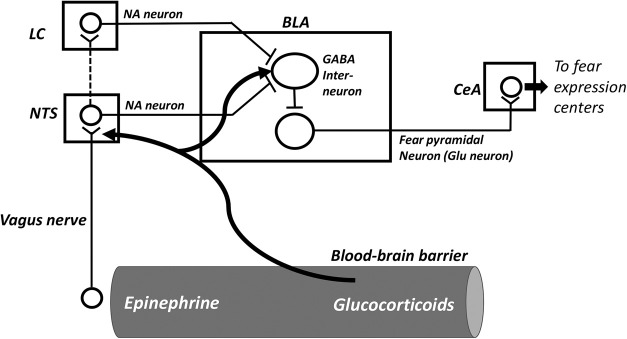Figure 1.
Interactions between glucocorticoids and norepinephrine (NA) in the regulation of GABAergic activity. During stress, adrenal hormones, epinephrine, and glucocorticoids, are released. Epinephrine, which does not cross the blood-brain barrier, induces the release of NA in the basolateral amygdala (BLA) by activating vagal afferents to the nucleus of the solitary tract (NTS). NA neurons in the NTS send direct noradrenergic fibers to the BLA. NA neurons from the NTS project also to the locus coeruleus (LC), which noradrenergic fibers reach directly the BLA. Glucocorticoids freely cross the blood–brain barrier and potentiate NA release in the BLA and facilitate the NA inhibitory effect on GABA interneurons in the BLA (de Quervain et al. 2009). This results in the decrease of excitability threshold of the pyramidal neurons in the BLA, which release the excitatory neurotransmitter, glutamate (Glu), in the central amygdala (CeA).

